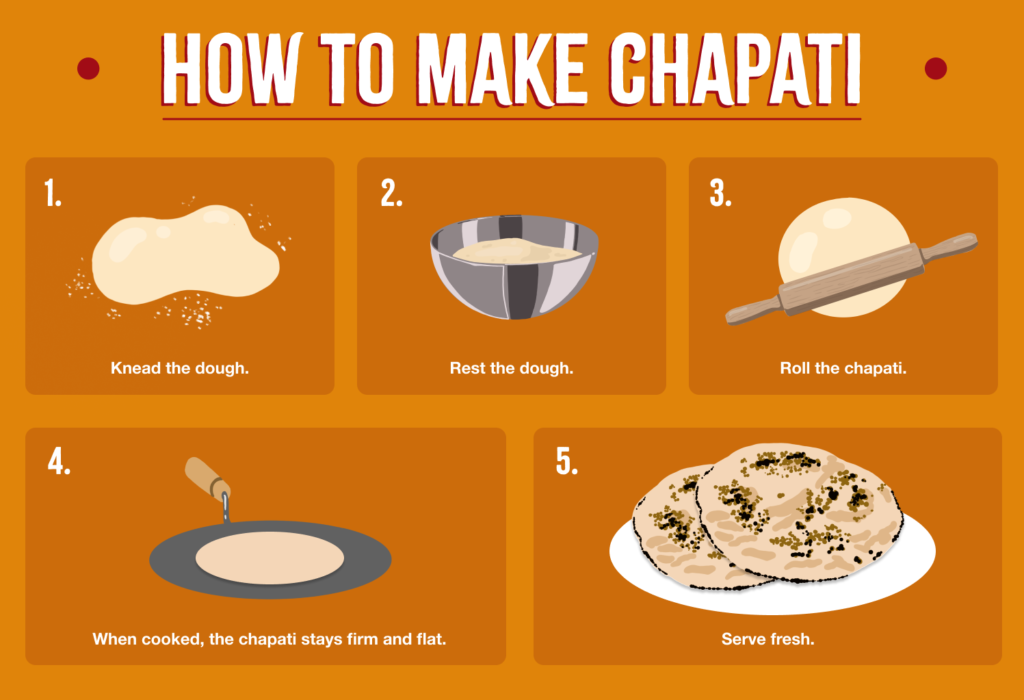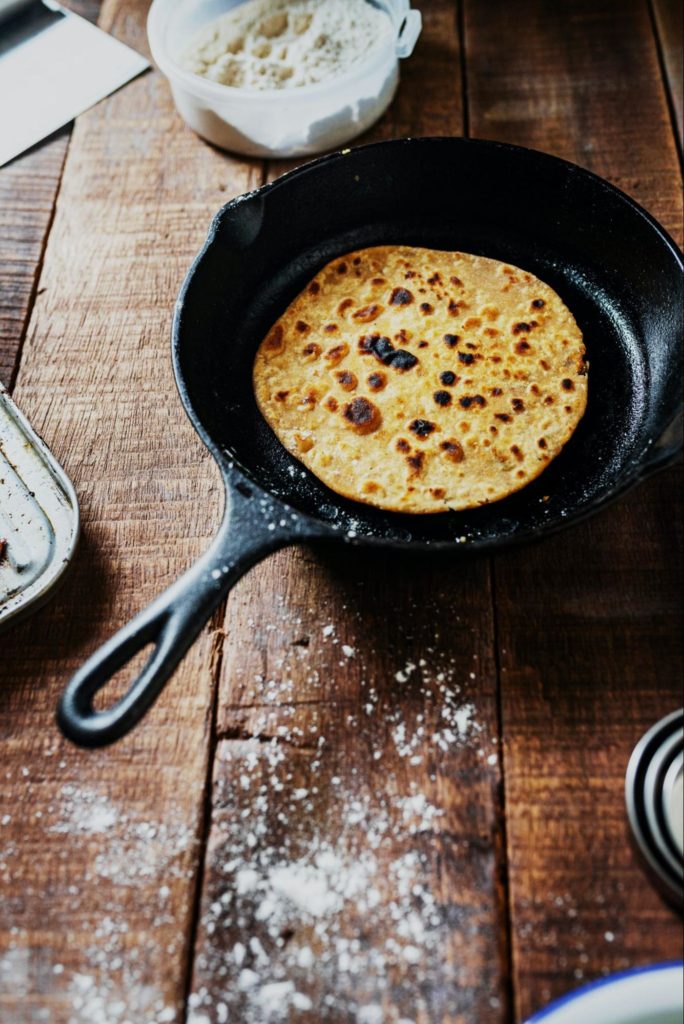Guide to Chapati: Unraveling the Delights of this Classic Bread
Indian cuisine is a treasure trove of diverse flavors, aromas, and textures, a trait perfectly embodied by Chapati. Soft and thin, this quintessential Indian bread has captured the hearts and palates of food enthusiasts around the globe.
Often enjoyed with various delectable accompaniments like curries, vegetables, or lentils, Chapati’s soft texture and earthy aroma genuinely elevate the dining experience. Beyond its culinary appeal, Chapati symbolizes warmth, tradition, and togetherness, making it an indispensable part of Indian culture and an inviting treat for food enthusiasts across the globe.
This guide will explore its origin, preparation, variations, and the delightful experience of savoring this delectable bread. Let’s dive in.
What is Chapati Bread?
Chapati, a cherished culinary gem hailing from the vibrant subcontinent of India, holds a special place in the hearts and palates of millions worldwide.
Its simple yet versatile preparation method involves mixing whole wheat flour with water and a pinch of salt, forming a soft dough that is rolled into thin, circular discs before being cooked on a hot grill or tawa– a shallow pan used to cook many types of Indian flatbreads.
The result is a delectable bread with a golden-brown surface, showcasing its signature puffed-up layers when exposed to direct flame.
The Key Ingredient: Chapati Flour
At the heart of this delicious bread lies the quintessential ingredient – Chapati flour, commonly known as “Atta.”
This flour is the very essence of authenticity, giving the bread its distinct flavor, texture, and nutritional value. Made from finely ground whole wheat grains, this flour is rich in fiber, essential vitamins, and minerals, making it a healthier choice compared to refined flours.
Chapati vs. Roti
While the terms “Chapati” and “roti” are often used interchangeably, there are subtle distinctions between the two. Both are unleavened flatbreads made from whole wheat flour and share similar preparation methods.
Roti is cooked directly over an open flame, while Chapati is typically cooked on a hot griddle or tawa. While the former becomes puffy, Chapati stays firm and flat.

How to Make Chapati
It’s not impossible to make your very own Chapati. You’ll need a tawa (a type of cooking pan) and a few key ingredients.
Chapati Ingredients
The foundation of Chapati is whole wheat flour, known as “Atta.” This flour is fiber-rich and imparts a nutty flavor to the bread. All you’ll need from there: a little salt and water. What could be simpler?
Chapati Recipe
Read along and learn how to make your very own Chapati.
#1 Kneading the Dough
Mix whole wheat flour with water and a pinch of salt to form a soft, elastic dough. This process ensures the gluten develops, resulting in a smooth texture
#2 Resting the Dough
Let the dough rest. This allows the gluten to relax.
#3 Rolling the Chapati
With a rolling pin, roll the dough balls into thin, round discs.
#4 Cooking on the Tawa
Place the rolled dough on a preheated Tawa. The high heat will cause the dough to puff up, creating air pockets. Ultimately, this gives the the bread its characteristic softness.
#5 Serving Fresh
Once cooked, serve hot!
Chapati Versatility and Accompaniments
Chapati’s versatility knows no bounds. It pairs exceptionally well with many dishes, making it a delightful addition to any meal.
Curries
Creamy, aromatic curries like Butter Chicken, Paneer Tikka Masala, or Dal Makhani find their ideal partner in Chapati. The bread’s soft texture complements the rich flavors of the gravies, allowing you to scoop up every last bit of goodness.
Vegetable Sabzis
Chapati also complements vegetable dishes such as Bhindi Masala, Aloo Gobi, and Palak Paneer, enhancing the overall experience. The mild taste allows the flavors of the vegetables to shine through.
Tandoori Delights
For a unique twist, succulent Tandoori meats like Chicken Tikka Masala or Seekh Kebabs can be rolled up in this bread for a delightful wrap. This fusion of flavors creates a lovely burst of taste in every bite.
Chutneys and Pickles
Savor your Chapati with chutneys and pickles for added flavor. From tangy mango chutney to spicy lime pickle, the condiments elevate the Chapati experience.

Health Benefits of Chapati Bread
Apart from being an irresistible delight for your taste buds, Chapati offers nutrition with numerous health benefits:
Whole Grains
Being made from whole wheat flour, Chapati is an excellent source of complex carbohydrates and fiber, promoting better digestion and providing sustained energy. The slow release of energy keeps you feeling full for extended periods.
Low in Fat
Chapati is inherently low in fat, making it a healthier alternative to other bread varieties. It provides a guilt-free way to enjoy bread without compromising on flavor.
Nutrient-Rich
The use of whole wheat flour ensures the retention of essential nutrients like iron, magnesium, and B vitamins. These nutrients play a vital role in maintaining overall health and well-being.
Take a Tour of India’s Palate with Sukhi’s
The world of Indian cuisine is nearly endless, offering endlessly customizable types of food: from breads to entrees. For more similar Indian bread, explore parathas and roti.
Looking for some good entrees to go with your bread? We recommend our classic Chicken Tikka Masala or Chicken Vindaloo. For even easier options, try our Street Wraps in various flavors.
At Sukhi’s, we are committed to providing an authentic and diverse culinary experience that celebrates the essence of Indian cuisine. From bread to many mouthwatering dishes, we promise a memorable, authentic dining experience.
No comments yet.